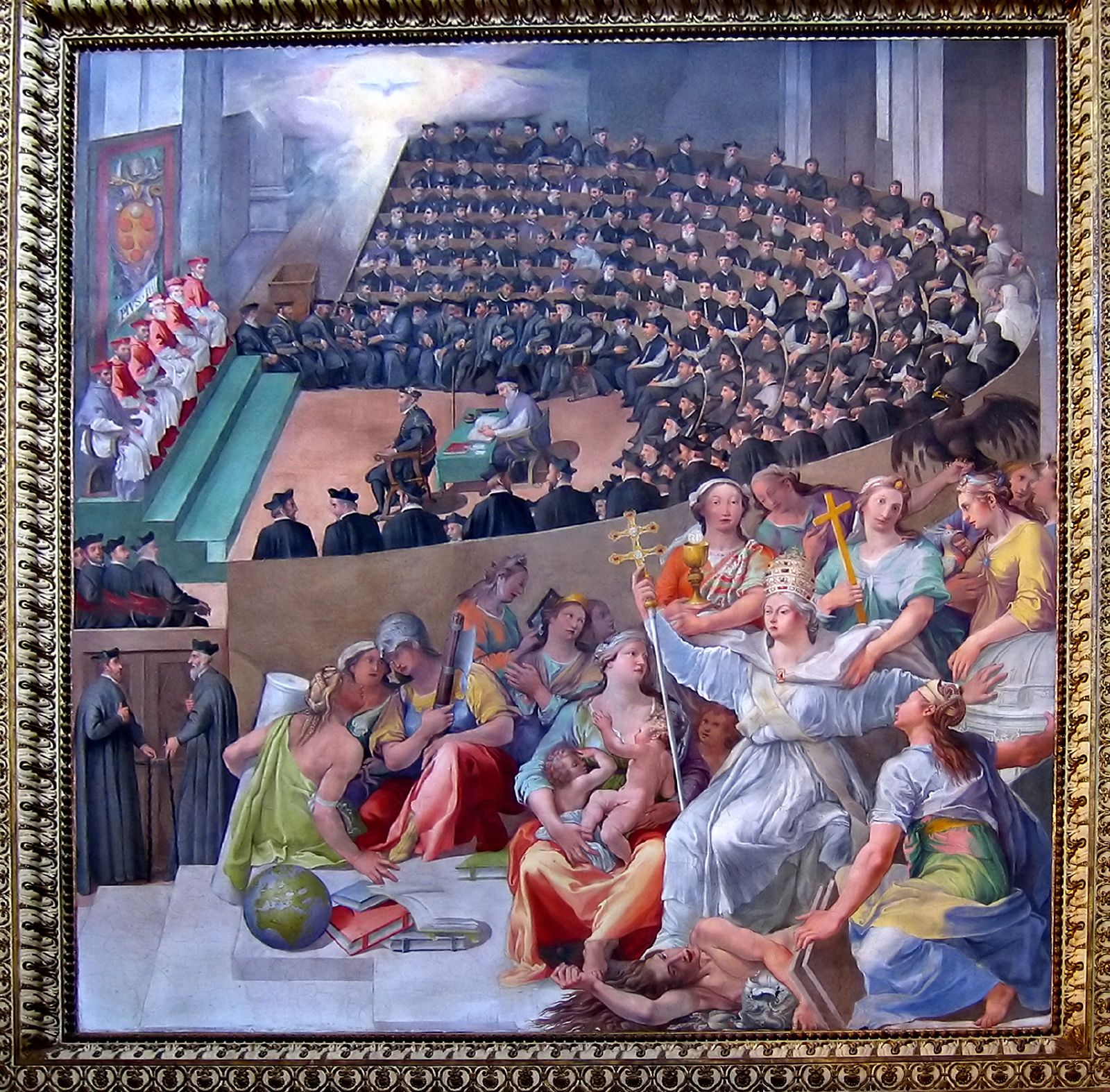|
Girolamo Fracastoro
Girolamo Fracastoro (; c. 1476/86 August 1553) was an Italian physician, poet, and scholar in mathematics, geography and astronomy. Fracastoro subscribed to the philosophy of atomism, and rejected appeals to hidden causes in scientific investigation. His studies of the mode of syphilis transmission are an early example of epidemiology. Life Fracastoro was born in Verona, Republic of Venice and educated at Padua where at the age of 19 he was appointed professor at the university. On account of his eminence in the practice of medicine, he was elected physician of the Council of Trent. A bronze statue was erected in his honor by the citizens of Padua, while his native city commemorated their great compatriot with a marble statue. He lived and practised in his hometown. In 1546 he proposed that epidemic diseases are caused by transferable tiny particles or "spores" that could transmit infection by direct contact, indirect contact, or even without contact over long distances. In his ... [...More Info...] [...Related Items...] OR: [Wikipedia] [Google] [Baidu] |
Council Of Trent
The Council of Trent (), held between 1545 and 1563 in Trent (or Trento), now in northern Italy, was the 19th ecumenical council of the Catholic Church. Prompted by the Protestant Reformation at the time, it has been described as the "most impressive embodiment of the ideals of the Counter-Reformation.""Trent, Council of" in Cross, F. L. (ed.) ''The Oxford Dictionary of the Christian Church'', Oxford University Press, 2005 (). It was the last time an ecumenical council was organized outside the city of Rome. The Council issued key statements and clarifications of the Church's doctrine and teachings, including scripture, the biblical canon, sacred tradition, original sin, justification, salvation, the sacraments, the Mass, and the veneration of saintsWetterau, Bruce. ''World History''. New York: Henry Holt and Company, 1994. and also issued condemnations of what it defined to be heresies committed by proponents of Protestantism. The consequences of the council were als ... [...More Info...] [...Related Items...] OR: [Wikipedia] [Google] [Baidu] |
The I Tatti Renaissance Library
The I Tatti Everyday Renaissance Library is a book series published by Harvard University Press, which aims to present important works of Italian Renaissance Latin Literature to a modern audience by printing the original Latin text on each left-hand leaf (verso), and an English translation on the facing page (recto). The idea was initially conceived by Walter Kaiser, former professor of English and Comparative Literature at Harvard and director of the Villa I Tatti and James Hankins. Its goal is to be the Italian Renaissance version of the Loeb Classical Library. James Hankins, Professor of History at Harvard University, is the General Editor. As of 2021, the series had sold more than 100,000 copies. In March 2025, it published its 100th volume. Many of the books in the series have never been translated into English before, and the series promises to increase the understanding of the Renaissance among the general public and non-specialist historians by making primary sources acc ... [...More Info...] [...Related Items...] OR: [Wikipedia] [Google] [Baidu] |
Josuah Sylvester
Josuah Sylvester (1563 – 28 September 1618) was an English poet. Biography Sylvester was the son of a Kentish clothier. In his tenth year he was sent to school at King Edward VI School, Southampton, where he gained a knowledge of French. After about three years at school, he appears to have been put to business, and in 1591 the title-page of his ''Yvry'' states that he was in the service of the Merchant Adventurers' Company. He was for a short time a land steward, and in 1606 Henry Frederick, Prince of Wales gave him a small pension as a kind of court poet. In 1613 he obtained a position as secretary to the Merchant Adventurers. He was stationed at Middelburg, in the Low Countries, where he died. Works He translated into English heroic couplets the scriptural epic of Guillaume du Bartas. His ''Essay of the Second Week'' was published in 1598; and in 1604 ''The Divine Weeks of the World's Birth''. The ornate style of the original offered no difficulty to Sylv ... [...More Info...] [...Related Items...] OR: [Wikipedia] [Google] [Baidu] |
Typhus
Typhus, also known as typhus fever, is a group of infectious diseases that include epidemic typhus, scrub typhus, and murine typhus. Common symptoms include fever, headache, and a rash. Typically these begin one to two weeks after exposure. The diseases are caused by specific types of bacterial infection. Epidemic typhus is caused by '' Rickettsia prowazekii'' spread by body lice, scrub typhus is caused by '' Orientia tsutsugamushi'' spread by chiggers, and murine typhus is caused by '' Rickettsia typhi'' spread by fleas. Vaccines have been developed, but none is commercially available. Prevention is achieved by reducing exposure to the organisms that spread the disease. Treatment is with the antibiotic doxycycline. Epidemic typhus generally occurs in outbreaks when poor sanitary conditions and crowding are present. While once common, it is now rare. Scrub typhus occurs in Southeast Asia, Japan, and northern Australia. Murine typhus occurs in tropical and subtropi ... [...More Info...] [...Related Items...] OR: [Wikipedia] [Google] [Baidu] |
Oil Of Guaiac
Oil of guaiac is a fragrance ingredient used in soap and perfumery. Despite its name it does not come from the '' Guaiacum'' tree, but from the palo santo tree (''Bulnesia sarmientoi''). Oil of guaiac is produced through steam distillation of a mixture of wood and sawdust from palo santo. It is sometimes incorrectly called guaiac wood concrete. It is a yellow to greenish yellow semi-solid mass which melts around 40–50 °C. Once melted, it can be cooled back to room temperature yet remain liquid for a long time. Oil of guaiac has a soft roselike odour, similar to the odour of hybrid tea roses or violets. Because of this similarity, it has sometimes been used as an adulterant for rose oil. Oil of guaiac is primarily composed of 42–72% guaiol, bulnesol, δ- bulnesene, β- bulnesene, α- guaiene, guaioxide and β- patchoulene. It is considered non-irritating, non-sensitizing, and non- phototoxic to human skin. Oil of guaiac was also a pre-Renaissance remedy to syphi ... [...More Info...] [...Related Items...] OR: [Wikipedia] [Google] [Baidu] |
Alcinous
In Greek mythology, Alcinous (also Alcinoüs; ; ''Alkínoos'' ) was a son of Nausithous and brother of Rhexenor. After the latter's death, he married his brother's daughter Arete who bore him Nausicaa, Halius, Clytoneus and Laodamas. In some accounts, Alcinous' father was Phaeax, son of Poseidon and Corcyra, and brother of Locrus. Conon3/ref> Mythology Argonautica In the myth of Jason and the Argonauts, Alcinous is represented as living with his wife Arete on Drépané island. The Argonauts, on their return from Colchis, came to his island, and were hospitably received. When the Colchians, in their pursuit of the Argonauts, likewise arrived in Drépané, and demanded that Jason's lover Medea should be delivered up to them, Alcinous declared that if she was still a virgin she should be restored to them, but if she was already the wife of Jason, he would protect her and her husband against the Colchians. The Colchians were obliged, by the contrivance of Aret ... [...More Info...] [...Related Items...] OR: [Wikipedia] [Google] [Baidu] |
Syphilis
Syphilis () is a sexually transmitted infection caused by the bacterium ''Treponema pallidum'' subspecies ''pallidum''. The signs and symptoms depend on the stage it presents: primary, secondary, latent syphilis, latent or tertiary. The primary stage classically presents with a single chancre (a firm, painless, non-itchy Ulcer_(dermatology), skin ulceration usually between 1 cm and 2 cm in diameter), though there may be multiple sores. In secondary syphilis, a diffuse rash occurs, which frequently involves the palms of the hands and soles of the feet. There may also be sores in the mouth or vagina. Latent syphilis has no symptoms and can last years. In tertiary syphilis, there are Gumma (pathology), gummas (soft, non-cancerous growths), neurological problems, or heart symptoms. Syphilis has been known as "The Great Imitator, the great imitator", because it may cause symptoms similar to many other diseases. Syphilis is most commonly spread through human sexual activi ... [...More Info...] [...Related Items...] OR: [Wikipedia] [Google] [Baidu] |
Rabies
Rabies is a viral disease that causes encephalitis in humans and other mammals. It was historically referred to as hydrophobia ("fear of water") because its victims panic when offered liquids to drink. Early symptoms can include fever and abnormal sensations at the site of exposure. These symptoms are followed by one or more of the following symptoms: nausea, vomiting, violent movements, uncontrolled excitement, fear of water, an inability to move parts of the body, confusion, and loss of consciousness. Once symptoms appear, the result is virtually always death. The time period between contracting the disease and the start of symptoms is usually one to three months but can vary from less than one week to more than one year. The time depends on the distance the virus must travel along Peripheral nervous system, peripheral nerves to reach the central nervous system. Rabies is caused by lyssaviruses, including the rabies virus and Australian bat lyssavirus. It is spread when an i ... [...More Info...] [...Related Items...] OR: [Wikipedia] [Google] [Baidu] |
Germ Theory
The germ theory of disease is the currently accepted scientific theory for many diseases. It states that microorganisms known as pathogens or "germs" can cause disease. These small organisms, which are too small to be seen without magnification, invade animals, plants, and even bacteria. Their growth and reproduction within their hosts can cause disease. "Germ" refers not just to bacteria but to any type of microorganism, such as protists or fungi, or other pathogens, including parasites, viruses, prions, or viroids. Diseases caused by pathogens are called infectious diseases. Even when a pathogen is the principal cause of a disease, environmental and hereditary factors often influence the severity of the disease, and whether a potential host individual becomes infected when exposed to the pathogen. Pathogens are disease-causing agents that can pass from one individual to another, across multiple domains of life. Basic forms of germ theory were proposed by Girolamo Fracastoro i ... [...More Info...] [...Related Items...] OR: [Wikipedia] [Google] [Baidu] |
Fomite
A fomite () or fomes () is any inanimate object that, when contaminated with or exposed to infectious agents (such as pathogenic bacteria, viruses or fungi), can transfer disease to a new host. Transfer of pathogens by fomites A fomite is any inanimate object (also called passive vector) that, when contaminated with or exposed to infectious agents (such as pathogenic bacteria, viruses or fungi), can transfer disease to a new host. Contamination can occur when one of these objects comes into contact with bodily secretions, like nasal fluid, vomit or feces from toilet plume. Many common objects can sustain a pathogen until a person comes in contact with the pathogen, increasing the chance of infection. The likely objects are different in a hospital environment than at home or in a workplace. Fomites such as splinters, barbed wire or farmyard surfaces, including soil, feeding troughs or barn beams, have been implicated as sources of virus. Hospital fomites For humans, common ... [...More Info...] [...Related Items...] OR: [Wikipedia] [Google] [Baidu] |
Osiris (journal)
''Osiris'' is an annual peer-reviewed academic journal covering research in the history of science. George Sarton oversaw the publication of fifteen issues from the establishment of the journal in 1936 until 1968. In 1985, the History of Science Society revived the journal and has published it annually ever since (though no issue appeared in 1991). It is now published by the University of Chicago Press. History Founded in 1936 by a lecturer (and later professor) at Harvard University George Sarton and by the History of Science Society, ''Osiris'' is a peer-reviewed, scientific journal dedicated to the history of science, medicine, and technology. It was founded in order to publish longer papers that were unsuitable for its partner publication, ''Isis''. See also *''Isis'' *List of history journals *History of science and technology The history of science and technology (HST) is a field of history that examines the development of the understanding of the natural world (scienc ... [...More Info...] [...Related Items...] OR: [Wikipedia] [Google] [Baidu] |




